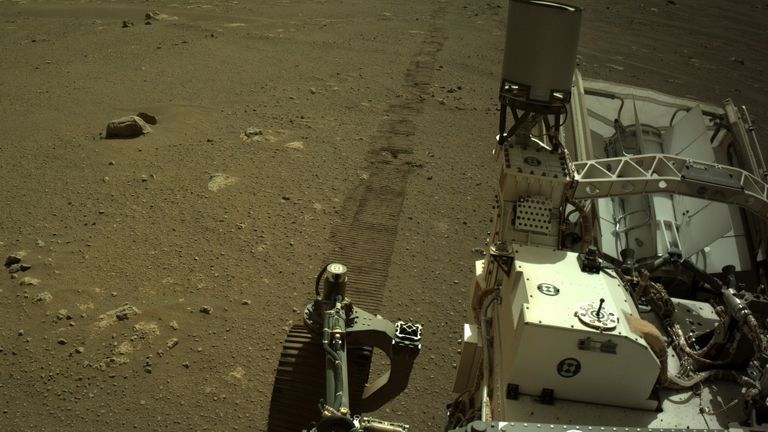The mini-helicopter Ingenuity has survived its first night alone on the Martian surface detached from the Perseverance rover.
NASA hailed the “major milestone” from Ingenuity ahead of what would be the first ever flight on an alien planet when the rotorcraft attempts to lift off in the coming days.
Now that it is no longer connected to the rover, the little helicopter is dependent on its own solar-powered battery to keep its electrical components warm and protected from the Martian night when temperatures can dip to -90C (-130F).
“The laws of physics may say it’s near impossible to fly on Mars, but actually flying a heavier-than-air vehicle on the red planet is much harder than that,” NASA has quipped.
Ingenuity is going to undergo a handful of tests over the coming days and if all systems are performing as they should be then the rotorcraft will attempt the first ever flight no earlier than 11 April.
It carries as a memento in tribute to flight pioneers from Earth, a piece of cloth that covered one of the Wright brothers’ aircraft wings. Its launch will also attempt to coincide with the 60th anniversary of the flight of the first human in space, Yuri Gagarin, on 12 April 1961.
But the challenge is significant. Because the Martian atmosphere is 1% the density of that on Earth the craft will struggle to achieve lift, although it will be assisted by gravity that is just a third as strong as our own.
Making it through the night was “a major milestone for the small rotorcraft”, said NASA.
“This is the first time that Ingenuity has been on its own on the surface of Mars,” added MiMi Aung, Ingenuity project manager at NASA’s Jet Propulsion Laboratory.
“But we now have confirmation that we have the right insulation, the right heaters, and enough energy in its battery to survive the cold night, which is a big win for the team. We’re excited to continue to prepare Ingenuity for its first flight test.”
The little chopper underwent a series of drills simulating the mission in a testing facility in California, including a high-vibration environment to mimic how it will hold up under the launch and landing conditions, and extreme temperature swings such as those experienced on Mars.
The aim is for the helicopter to hover at 3m (10ft) above the surface for around 30 seconds before descending and touching back down.
Perseverance will then download the data taken by the helicopter and the team will be able to conclude whether the flight has been a success or not.
The autonomous little chopper has an on-board camera, but does not contain any scientific instruments. NASA aims to develop the drone as a prototype to see if it could be worth attaching scientific sensors to similar devices in future.


